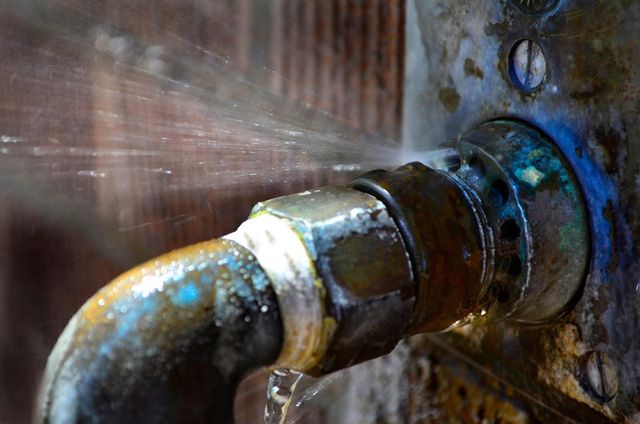6 Ways to Find Concealed Water Leakages in Your Home
6 Ways to Find Concealed Water Leakages in Your Home
Blog Article
Nearly everybody may have their own individual perception on the subject of Hacks to detect leaks.

Early detection of leaking water lines can reduce a prospective catastrophe. Besides saving you money, it will certainly reduce the aggravation and also irritation. The moment you find a leakage, calling your plumber for repair work is the most effective option. Some little water leaks might not be noticeable. If you can not identify it with your nude eyes, below are some hacks that help.
1. Examine the Water Meter
Checking it is a surefire method that assists you uncover leakages. If it moves, that suggests a fast-moving leak. This means you may have a sluggish leak that might even be underground.
2. Check Water Consumption
Assess your water bills and also track your water usage. As the one paying it, you ought to discover if there are any discrepancies. If you spot sudden changes, in spite of your consumption being the same, it indicates that you have leaks in your plumbing system. Bear in mind, your water expense must fall under the exact same range every month. An abrupt spike in your bill shows a fast-moving leak.
On the other hand, a constant boost on a monthly basis, even with the same practices, reveals you have a slow leakage that's also gradually escalating. Call a plumber to extensively examine your home, especially if you really feel a cozy area on your flooring with piping beneath.
3. Do a Food Coloring Test
When it comes to water intake, 30% comes from bathrooms. If the color somehow infiltrates your dish during that time without flushing, there's a leakage in between the storage tank and dish.
4. Asses Outside Lines
Don't fail to remember to examine your exterior water lines too. Ought to water seep out of the connection, you have a loose rubber gasket. One tiny leak can waste lots of water as well as surge your water expense.
5. Assess the scenario and also examine
House owners ought to make it a practice to check under the sink counters and also even inside cabinets for any kind of bad odor or mold growth. These 2 red flags show a leak so punctual interest is required. Doing regular evaluations, also bi-annually, can save you from a significant trouble.
Examine for discolorations and also compromising as many pipelines as well as devices have a life expectations. If you presume dripping water lines in your plumbing system, don't wait for it to escalate.
Early detection of leaking water lines can minimize a potential disaster. Some small water leakages may not be noticeable. Checking it is a proven way that helps you find leaks. One tiny leak can squander lots of water as well as spike your water expense.
If you think leaking water lines in your plumbing system, do not wait for it to escalate.
WARNING SIGNS OF WATER LEAKAGE BEHIND THE WALL
PERSISTENT MUSTY ODORS
As water slowly drips from a leaky pipe inside the wall, flooring and sheetrock stay damp and develop an odor similar to wet cardboard. It generates a musty smell that can help you find hidden leaks.
MOLD IN UNUSUAL AREAS
Mold usually grows in wet areas like kitchens, baths and laundry rooms. If you spot the stuff on walls or baseboards in other rooms of the house, it’s a good indicator of undetected water leaks.
STAINS THAT GROW
When mold thrives around a leaky pipe, it sometimes takes hold on the inside surface of the affected wall. A growing stain on otherwise clean sheetrock is often your sign of a hidden plumbing problem.
PEELING OR BUBBLING WALLPAPER / PAINT
This clue is easy to miss in rooms that don’t get much use. When you see wallpaper separating along seams or paint bubbling or flaking off the wall, blame sheetrock that stays wet because of an undetected leak.
BUCKLED CEILINGS AND STAINED FLOORS
If ceilings or floors in bathrooms, kitchens or laundry areas develop structural problems, don’t rule out constant damp inside the walls. Wet sheetrock can affect adjacent framing, flooring and ceilings.
https://www.servicemasterbyzaba.com/blog/how-to-detect-water-leakage-in-walls/

I came across that write up about Leaking water lines while doing a search on the search engines. Do you know about another person who is fascinated about the subject? Please feel free to share it. Many thanks for your time. Visit again soon.
Report this page